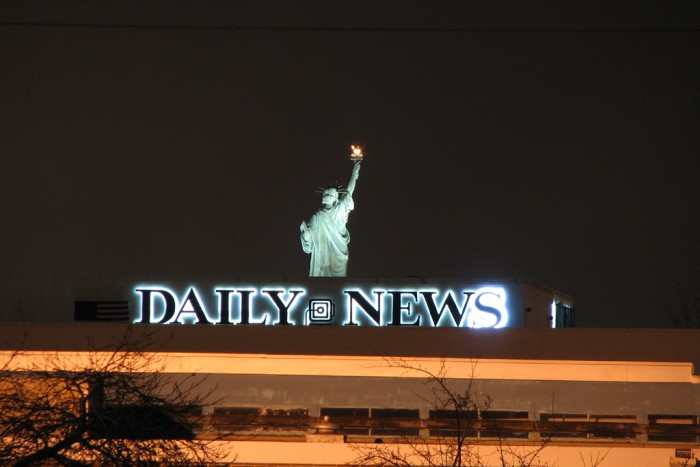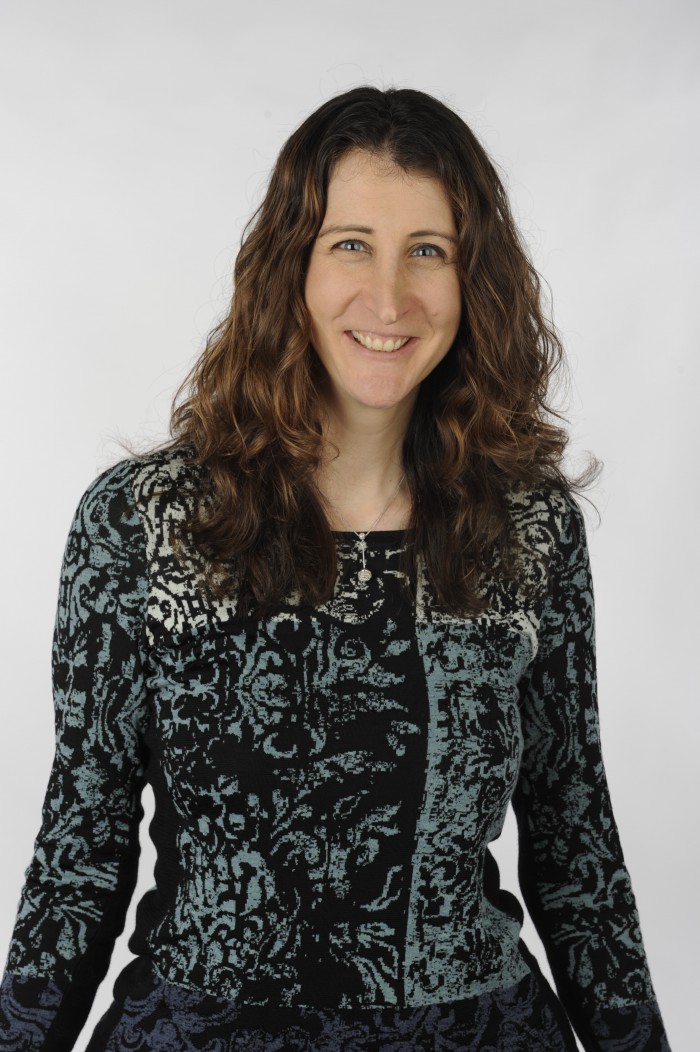
 The New York Daily News doesn’t have the resources of national news organizations, and it’s experienced particular upheaval in recent months as the paper’s publisher, Mort Zuckerman, floated (and then, last week, rejected) the idea of putting the Daily News up for sale. But by taking manageable steps and banking on people’s generosity and interest, Cyna Alderman, the lab’s managing director as well as general counsel for the Daily News, has built a program that now includes “office hours” and sold-out events.
The New York Daily News doesn’t have the resources of national news organizations, and it’s experienced particular upheaval in recent months as the paper’s publisher, Mort Zuckerman, floated (and then, last week, rejected) the idea of putting the Daily News up for sale. But by taking manageable steps and banking on people’s generosity and interest, Cyna Alderman, the lab’s managing director as well as general counsel for the Daily News, has built a program that now includes “office hours” and sold-out events.
“We’ll never have 200 developers on staff,” Alderman told me. “But we do have the ability to connect with startups in the community and help them, while also trying to address needs we see across the media industry.”
I spoke with Alderman about launching the Innovation Lab and keeping it afloat on a shoestring. Here’s our conversation, lightly condensed and edited.
These companies started getting a lot of attention just by being on the New York Daily News website. And we could give them a lot of feedback to help them figure out what companies like us were interested in. Both Olapic and Visual Revenue [were successful] after working with us [Outbrain acquired Visual Revenue in 2013; Olapic recently raised a fresh $15 million.]
So we started trying to figure out how we could work with startups in a more directed way, where instead of just fortuitously meeting some companies that we thought were interesting — we met Visual Revenue at a meetup and thought their analytics tech was cool — we could have more directed messaging to the startup community.
The companies that come in own their tech and their IP. We help them grow. We take 5 percent equity in these companies, but that also helps motivate people internally to participate in the program. It’s not just charity, we’re not just doing it in our free time — we do have an incentive to continue working with these companies and give them the resources they need.
The first company to come in was Datavisual. They started with us in December 2013 and signed on for six months. It went so well that we ended up working with them for a full year.
In the newsroom, we had identified the need for a very simple way for journalists to create visualizations to accompany their stories, without having to go through a design queue. Reporters who are asked to write several stories a day and get them up on the website don’t necessarily have time to go through design to get a map or chart or graph to accompany their story. Datavisual is a very simple solution: You can drag and drop your data into a template, then just embed that into a story.
Kristen Lee was our editorial person on the Lab team, and she was very passionate about Datavisual. She created trainings for the journalists so they could learn how to use it. We sat [Datavisual cofounders] Danne [Woo] and Peter [Darche] right with the [Daily News] digital team so they could all be interacting. The founders were able to watch journalists interacting with the program, see where people were getting stuck or lost, and our design team was very involved in helping with the testing and the roadmap.

You have to be really flexible and keep your mind open. When I started this, I never thought I’d be interested in doing an event; that wasn’t on my radar screen at all. Now, though, I think these events are one of the best things we do. Working with one or two startups at a time is great, but you’re really only impacting those one or two startups. When you have events, you’re reaching 200 or 250 people at a time.
We’re also doing office hours. It’s an opportunity for startups that want just a small amount of feedback. Companies can come into the Daily News, meet relevant people on our team, and, as they’re developing their products, get some real-time feedback from someone who could end up being their customer. We originally thought of that program as a community giveback, but it’s been eye-opening for us, too, to see what’s coming. We’ve seen some incredible startups come through the Lab, and all of these interactions open your brain to new kinds of thinking and new ways of approaching problems.
In the beginning, it wasn’t easy. I had to manage expectations of what the Lab would be — the goal couldn’t be, oh, we’ll work with 10 companies and within seven years we’ll have a whole new revenue stream because we’ll have all this income coming in from all the exits that are going to happen.
The reason to start a program like this had to be about just getting out and being part of the community — getting the Daily News name out there as a company that cares what’s happening; showing the staff that we’re not just sitting back and waiting for the end of the world with media.
A more realistic goal than finding the next Twitter or Instagram was just getting one of our development initiatives addressed. With Datavisual, we have people in the newsroom who are trained in the tool and can use it to embed visualizations in their stories. That wasn’t something we were able to do before.
Those were achievable goals, and it’s why we were able to get signoff at the high level. Grant Whitmore, our head of digital, has been incredibly supportive of the Innovation Lab, and I tap a lot of people from his team.
It’s okay to plug into a bigger ecosystem and start sharing information. We don’t feel that we have to own these products. Our expertise isn’t building new tools to address new problems, though we are building out our development team — we just brought our mobile app and mobile website in-house, but historically, we hadn’t been building new products in-house. That just didn’t seem to be an option to me. We’re not Gannett or Hearst or The New York Times. I knew that we would never have 200 developers on staff, but we do have the ability to connect with startups in the community and help them while also trying to address needs we see across the media industry.
But Keith actually came to me in the legal capacity to make sure that what he was doing was okay and wasn’t violating any of his obligations to the company [by also working on a startup]. [Optimera focuses on] ad tech viewability, [and that] is an area that people are very interested in. We had to build out a separate type of program for him: We liked him working at his job [in ad operations], so we had to change how our program worked. We created a milestone where we earn equity based on achieving different milestones as he builds his tool out. So, for example, once he completes QA, we get a certain amount of equity, progressing up to 5 percent.